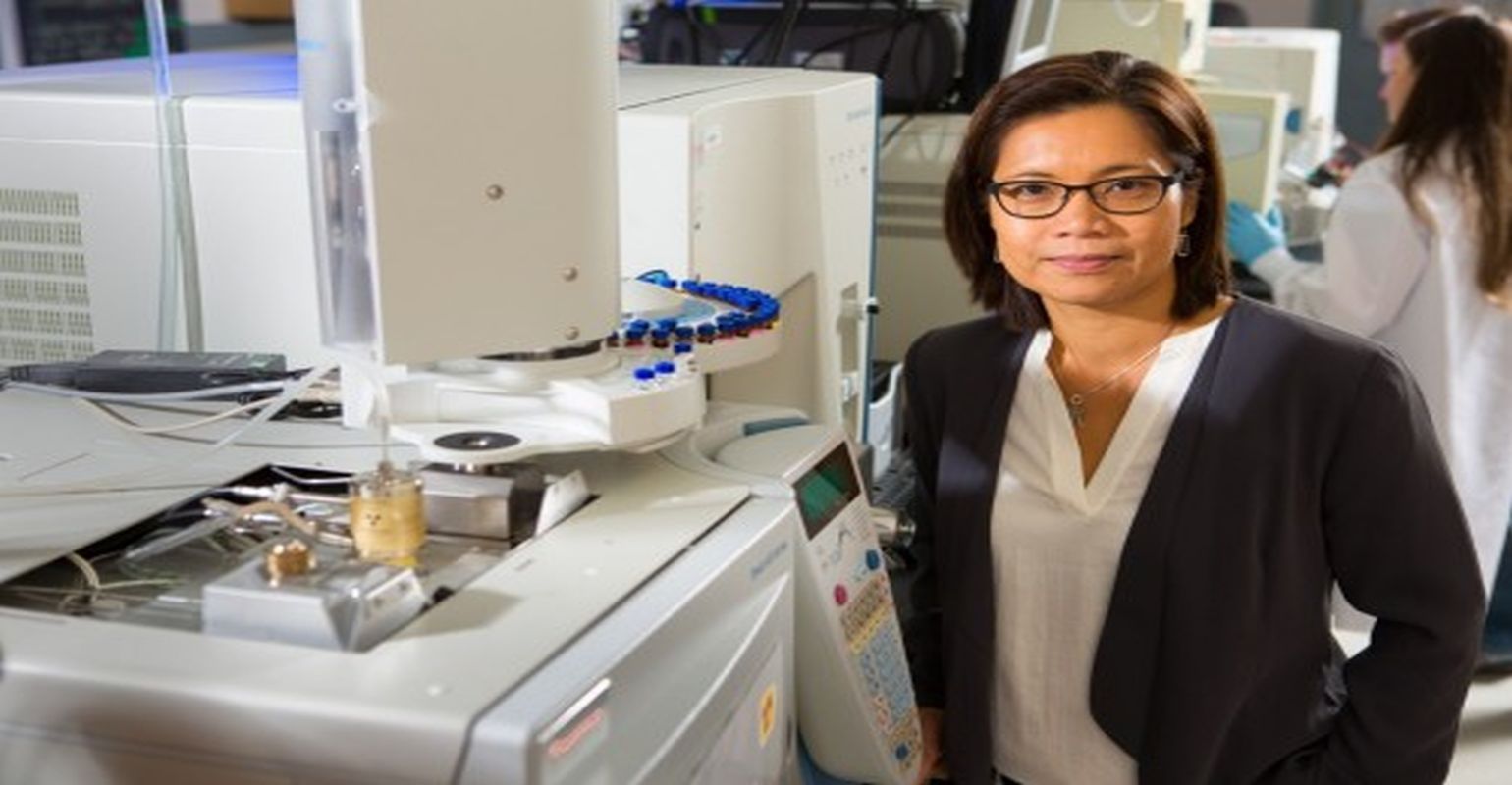Antibiotics in Wastewater: UB Chemist Investigates a Disturbing Trend

In the fight against antimicrobial resistance, wastewater is the battleground where University at Buffalo chemist Diana Aga, PhD, works. Her research examines how sewage treatment systems help - or don’t help - to eliminate antimicrobial drugs and their remnants, called residues, from wastewater before it’s discharged into rivers and lakes.
This science is vital as the world seeks to better understand how bacteria and other microorganisms are becoming resistant to medicines, giving rise to “superbug” diseases that don’t respond to known pharmaceuticals.
As part of her efforts to advance science in this field, Aga is assisting the World Health Organization and NSF International in convening a meeting of global experts in Hamburg, Germany from May 8-9 to discuss the best methodologies for analyzing antibiotic residues in water.
The goal is to generate recommendations on topics such as which antibiotics should be measured and what technologies are available for detection, says Aga, the Henry M. Woodburn Professor of Chemistry in UB’s College of Arts and Sciences.
Data on the levels of antimicrobials in wastewater and river water can help scientists understand not just the effectiveness of treatment technologies, but also how the drugs are being used in different parts of the world. This type of monitoring could provide insight into the quantity and type of antibiotics being consumed by humans and animals in a specific region, for example.
The Pan American Health Organization (PAHO) is also interested in Aga’s work, with Marcelo Galas, a specialist in antimicrobial resistance at PAHO, visiting UB in late April to build a relationship with Aga’s lab as the agency develops an action plan to combat antimicrobial resistance in the Caribbean and Latin America.
“PAHO is supporting the countries of the Americas region to build capacities to control the problem of antimicrobial resistance in their member states,” Galas said. “Considering that the environment is an excellent vehicle for the generation and dissemination of resistance, the collaboration with Dr. Aga and her group will complement the actions of PAHO regarding the evaluation of the presence of antibiotics, resistance genes and resistant bacteria in the environment. The partnership will advance our efforts to measure the impact of antimicrobial resistance and design strategies to control the problem.”
“While traditional surveillance of antimicrobial resistance has focused on resistant bacteria from hospitals, we need to investigate the role of wastewater treatment plants and large animal facilities as potential hotspots for antimicrobial resistance,” Aga says.
Her research highlights how wastewater treatment systems worldwide have fallen behind the times.
She explains that sewage treatment has traditionally focused on killing disease-causing bacteria, extracting solid matter such as human excrement, and reducing nutrients such as nitrogen and phosphorus. Antibiotics and other pharmaceuticals, which are found in patients’ urine, have largely been ignored, along with chemicals found in personal care products such as shampoo and antibacterial soaps.
When wastewater treatment plants fail to remove antibiotics from sewage, the drugs and their remnants flow into rivers and lakes, possibly contributing to the spread of antimicrobial resistance. In addition, treatment plants themselves may act as a breeding ground for drug-resistant germs, with bacteria and antibiotics mingling in sewage sludge, causing drug-resistant strains to prosper while others die out.
Aga’s work looks to fill in important gaps in knowledge of how antibiotics enter the environment, and how resistance spreads. Her current and past research includes:
- Studying how the different advanced treatment processes in municipal wastewater treatment plants reduce or eliminate antibiotics and their residues from water that’s later discharged into waterways. This work is ongoing.
- Comparing levels of antibiotics and their residues in river water in Asia (Bangladesh, Hong Kong, India, the Philippines) and in the U.S. and Europe (Sweden, Switzerland). This multi-institution project includes sampling water from upstream and downstream of wastewater treatment plants in different countries. This work is ongoing.
- Investigating how well waste management systems on dairy farms reduce or eliminate antibiotics and their residues from manure. The excrement is often repurposed as fertilizer or bedding for animals, which can cause the compounds to leach into the environment. Aga’s current projects in this area are largely complete, with important results published in 2018.
In addition to researching antimicrobials, Aga has also studied how other pharmaceuticals, such as estrogens and antidepressants, may persist in wastewater after treatment. She is interested in how such chemicals may affect ecosystems, with one past study finding antidepressants or their metabolized remnants in the brains of fish in the Niagara River, which connects two of the Great Lakes.
Source Newsroom: University at Buffalo